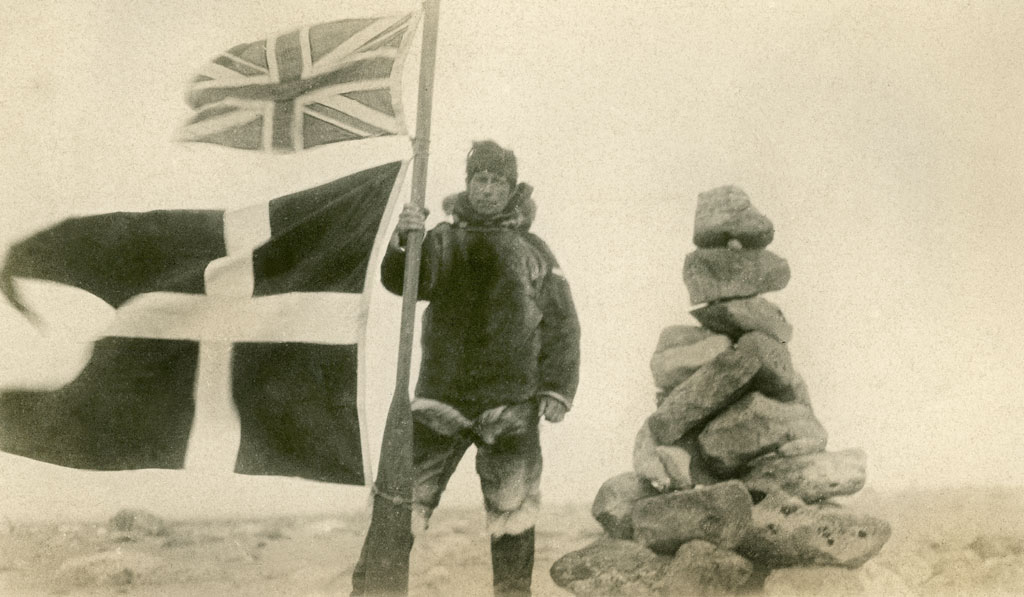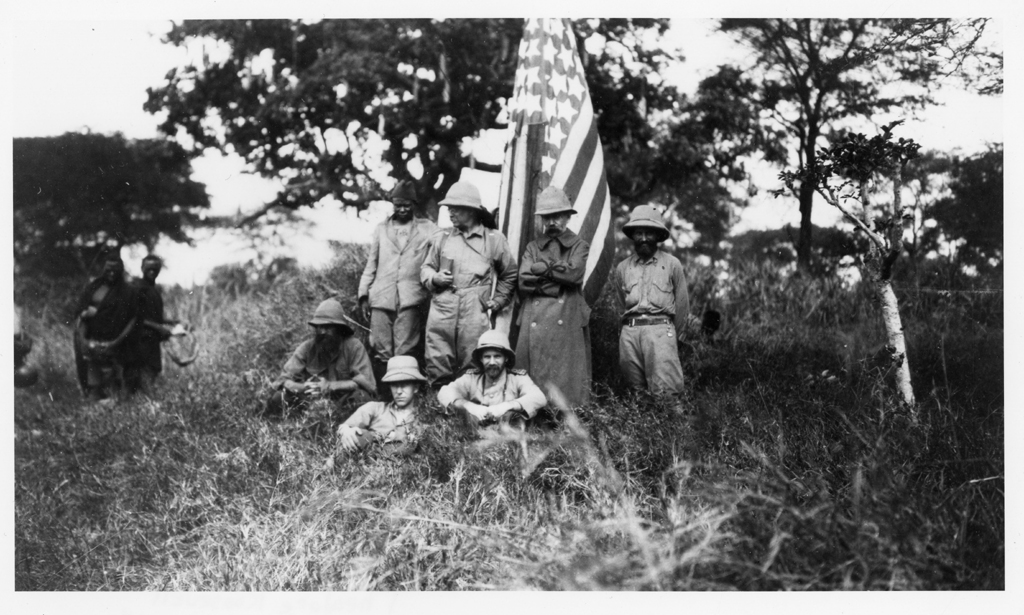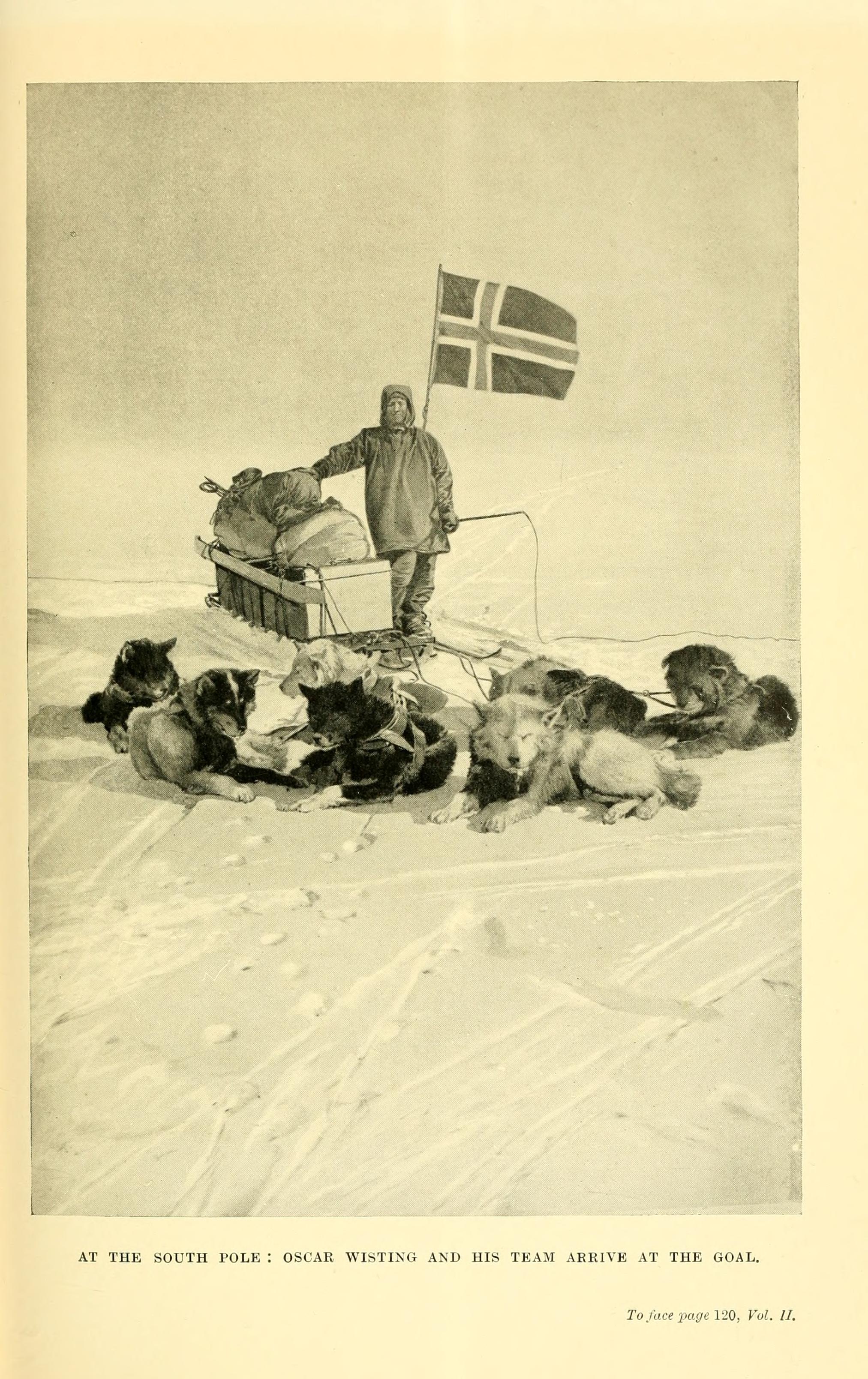The Digital Specimen, Field Book, and Publication Trifecta
The Field Book Project (FBP) and the Biodiversity Heritage Library (BHL) are pleased to bring you a joint blog series showcasing some of the best examples of digital connections between museum specimens, field book catalog records, and the resulting publications for three notable expeditions. This four part series will continue over the coming months. Ever wonder what it takes to understand the full story of historical expedition science? Read on!
 |
| Burying Members of the Franklin Expedition at Starvation Cove, c. 1924. Smithsonian Institution Archives, Science Service Records, RU 007091, Box 409, Folder 2. 2005-8639. |
It’s safe to say, everyone has an idea of what an expedition is; I hope all will agree when I say they are fascinating. Expeditions can be a thrilling story of exploration, national pride, thrill-seeking, and personal drama. They have been organized for a myriad of political or personal reasons; whatever these may have been, expeditions frequently yield natural history observations and specimens. Expeditions are also a wonderful source of information about biodiversity. Since expedition participants usually come from multiple institutions and disciplines, more collecting is often possible. This can result in a specimen collection of greater breadth and variety than a typical collecting event. With these characteristics, an expedition can prove a fascinating story and an important source of scientific documentation.
So I’ve been thinking it would be interesting to look at the Field Book Project’s expedition content. FBP was inspired by the challenges a researcher experienced tracking down specimens and field books from an expedition. Those experiences helped shape the cataloging structure FBP developed. We create catalog records for field books, their collections, and their creators (persons, organizations, and expeditions). Since we started, we have cataloged field books from 103 expeditions, some involving well-known individuals or documenting the first time an area was thoroughly studied.
 |
| Theodore Roosevelt on African Expedition, 1909. Smithsonian Institution Archives, RU 00095, Box 56, Folder 10. SIA2009-1371. |
On December 19th, FBP catalog records were made available through the Smithsonian’s Collection Search Center. This has created what I like to think of as the trifecta. What constitutes the trifecta? There are three major parts to natural history documentation that have proven important to researchers with whom we’ve worked: (1) the specimens, (2) the field books created when specimens were collected, and (3) the publications that resulted from their study. The Smithsonian Institution maintains online databases for many of their specimens. As BHL blog readers know, Smithsonian Libraries has also contributed to the Biodiversity Heritage Library to provide digitized versions of the publications for free access online. The FBP now offers online descriptions of the individual primary documents. The trifecta is growing for a number of Smithsonian sponsored expeditions and collecting events. A researcher now has a better chance of locating a specimen, its related field book, and a publication that cites it.
As a Field Book Project cataloger, I am thrilled to see the last element of the trifecta, our records, now available. While cataloging, we often verify information like location names by searching for digitized publications the creator may have written based on the field books. I find it fascinating to see how a publication can be informed by a primary document and vice versa. A researcher may be able to determine what a creator saw as significant about the collecting through the publication, and see the day-to-day work that the creator used to come to that conclusion in the field book.
Researching an Expedition
 |
|
“At the South Pole: Oscar wisting and his team arrive at the goal” from The South Pole by Roald Amundsen, pg 121. Biodiversity Heritage Library.
|
Publications resulting from expeditions also run a high risk of losing an explicit expedition connection. Book catalog records do not always indicate that a publication documents a certain expedition. A researcher looking for resulting publications might have to search for participants as authors, looking for a period of time after the expedition was completed, then read the publication itself to verify the content is relevant. Some of these issues, like discovery of expedition related publications, may seem pretty straightforward, but this type of search assumes that the researcher knows who took part in the expedition.
How expeditions are documented
Expedition documentation varies widely. In recent years, some universities and museums have used the general appeal of expeditions to highlight some of their own collections online. These can be wonderfully informative websites, but usually only cover a few expeditions of significance to the home institution.
The Smithsonian Institution, as part of its initiative to be a provider of public history, has a detailed list of Smithsonian related expeditions available as an online guide that covers 1878 – 1917, compiled from Smithsonian Annual Reports. The Institution’s annual reports have a long tradition of discussing any major fieldwork. Smithsonian Institution Archives (SIA) also maintains more than 150 individual expedition records. These records are at varied levels of completeness, since Annual Reports sometimes only mention the name of a collecting effort if it was small.
Over the last two years, FBP has documented 103 expeditions relating to field notes. Several were not in the extensive list already kept by SIA, but deeply buried in personal or departmental papers. These can be rich resources, but a researcher would usually not know the information was there without reading the materials, despite the detailed finding aids SIA generates every year.
Researching an expedition is like untangling a very large knot. FBP, BHL, and museum divisions work to increase online documentation so researchers can find the right string to pull. This is by no means a finished process; many of us know what a gnarly tangle the search through materials can become. The digitization of the specimen, field book and publication trifecta can only serve to ease the burden of this twisted ravel of biology, personal history and published record, helping us and our researchers to find the connections.





Leave a Comment